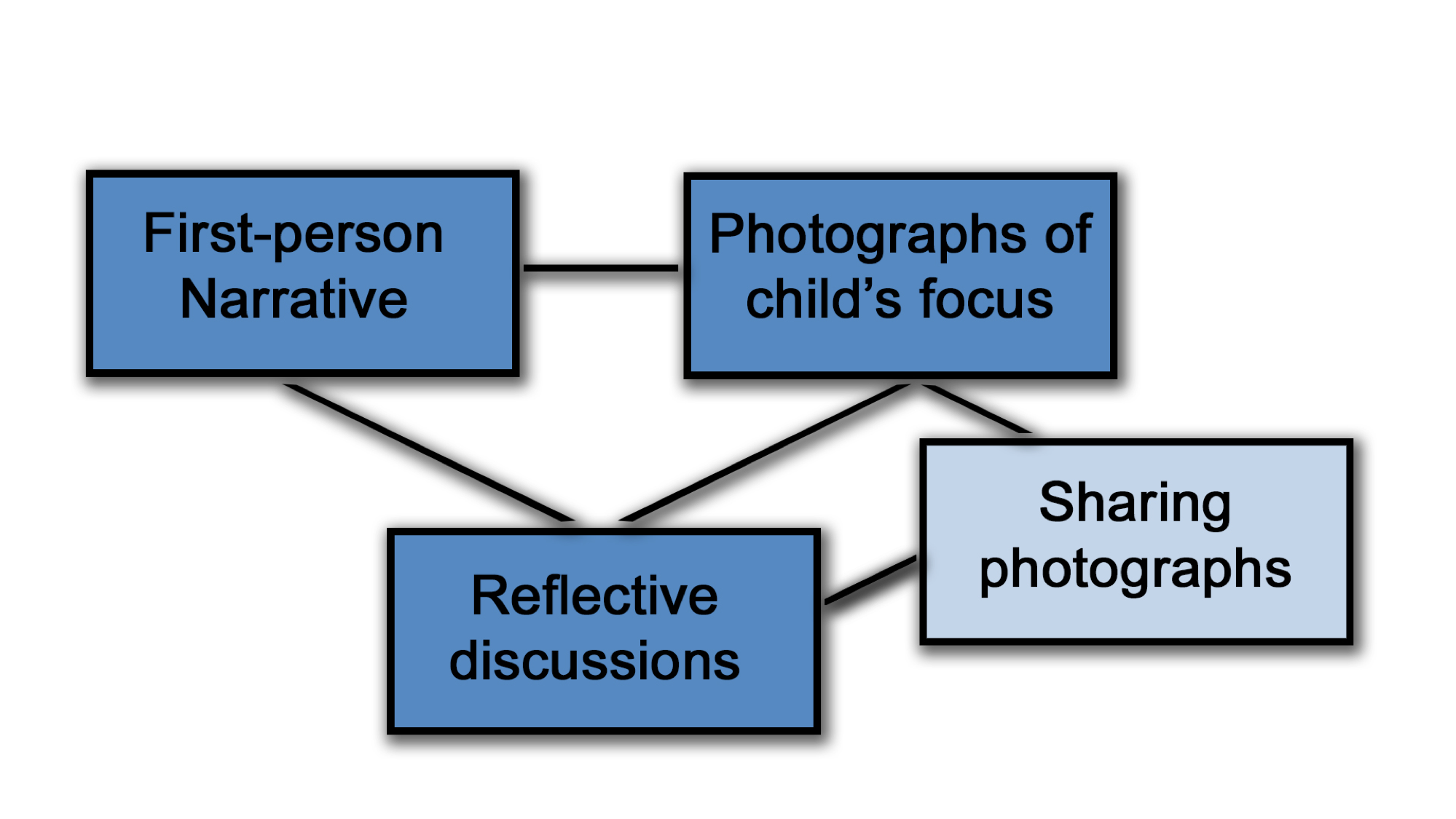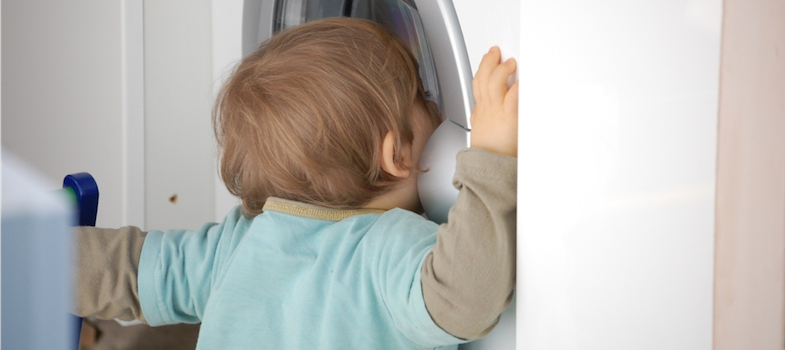How can the photographs be shared?
As you saw in the video that introduced In-the-Picture in the Section 1,
the approach involves sharing the photographs of the child’s focus of interest
taken during the activity that you observe. In this section you are going to
explore in a little more detail how this can be done and also complete an
activity in which you reflect on the issues that can arise.
How were the photographs shared?
In the original research projects the ways that the images were shared with the children involved slightly different resources and approaches. Sometimes the photographs taken were shared using a laptop, by looking at the screen at the back of the camera, through a portable digital picture screen, or on a setting’s desktop computer. Practitioners also used an ipad or tablet PCs or mobile phones because the children were accustomed to being photographed using such equipment. On one occasion they were shared in a photo-album at a Pizza restaurant with their family. All these approaches are equally valid and your choice will depend on the children and families that you work with and the resources available to you. The aim is that the photographs can be readily shared with the child with some immediacy so that the images retain some currency with the child’s activity that has been observed.
It is also important to recognise that the photograph sharing is a child-lead activity. The opportunity to look at the pictures is offered but the child makes their own decision as to whether they want to participate or not. Of course you can present the sharing activity more than once whilst remaining sensitive to what the child is communicating about their interest in joining in. Being child-lead also means that assumptions should not be made about their likely engagement on the basis of a perception of their level of understanding. Practitioners who have used In-the-Picture have reported that a child's response to the shared photographs can exceed their expectations.
